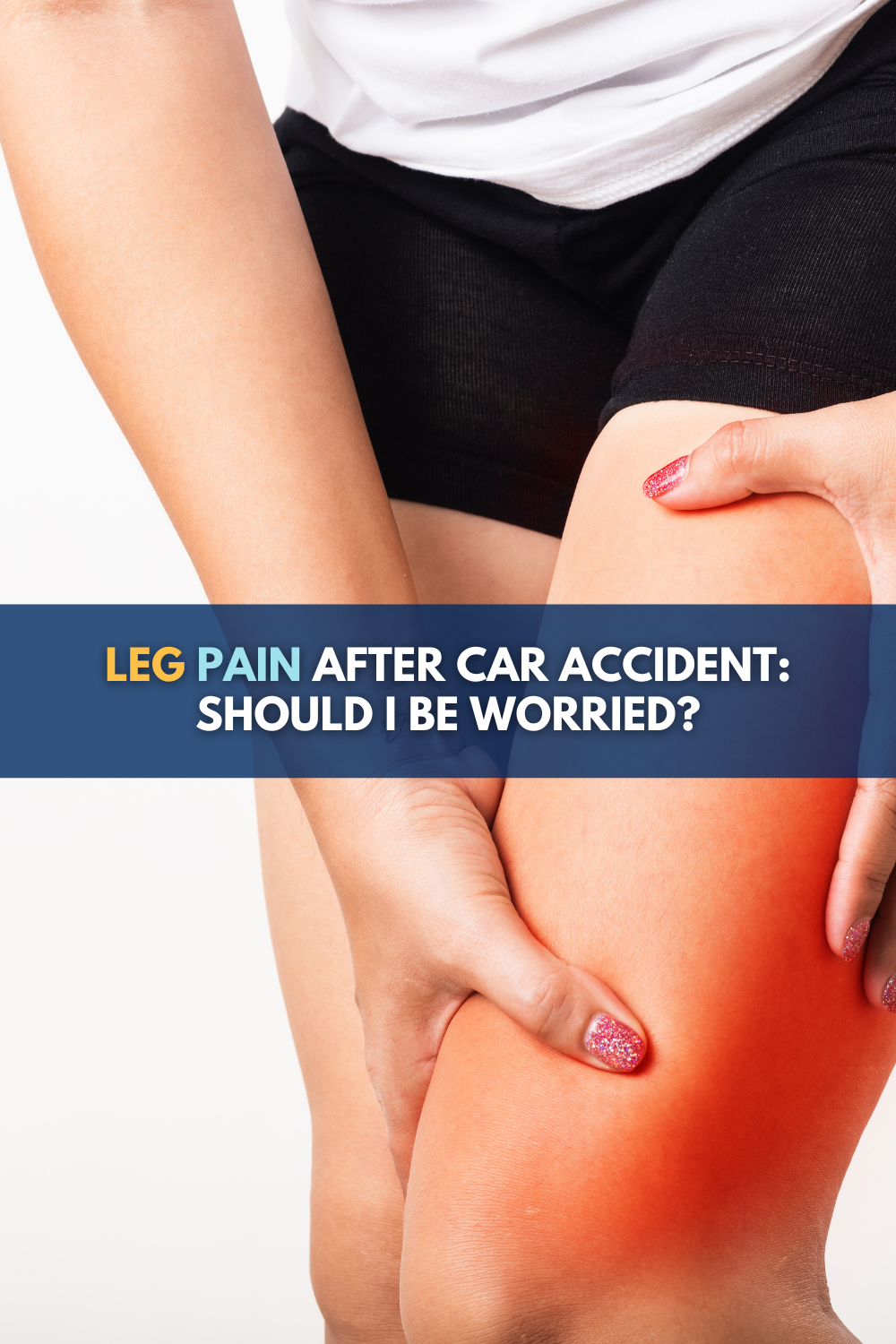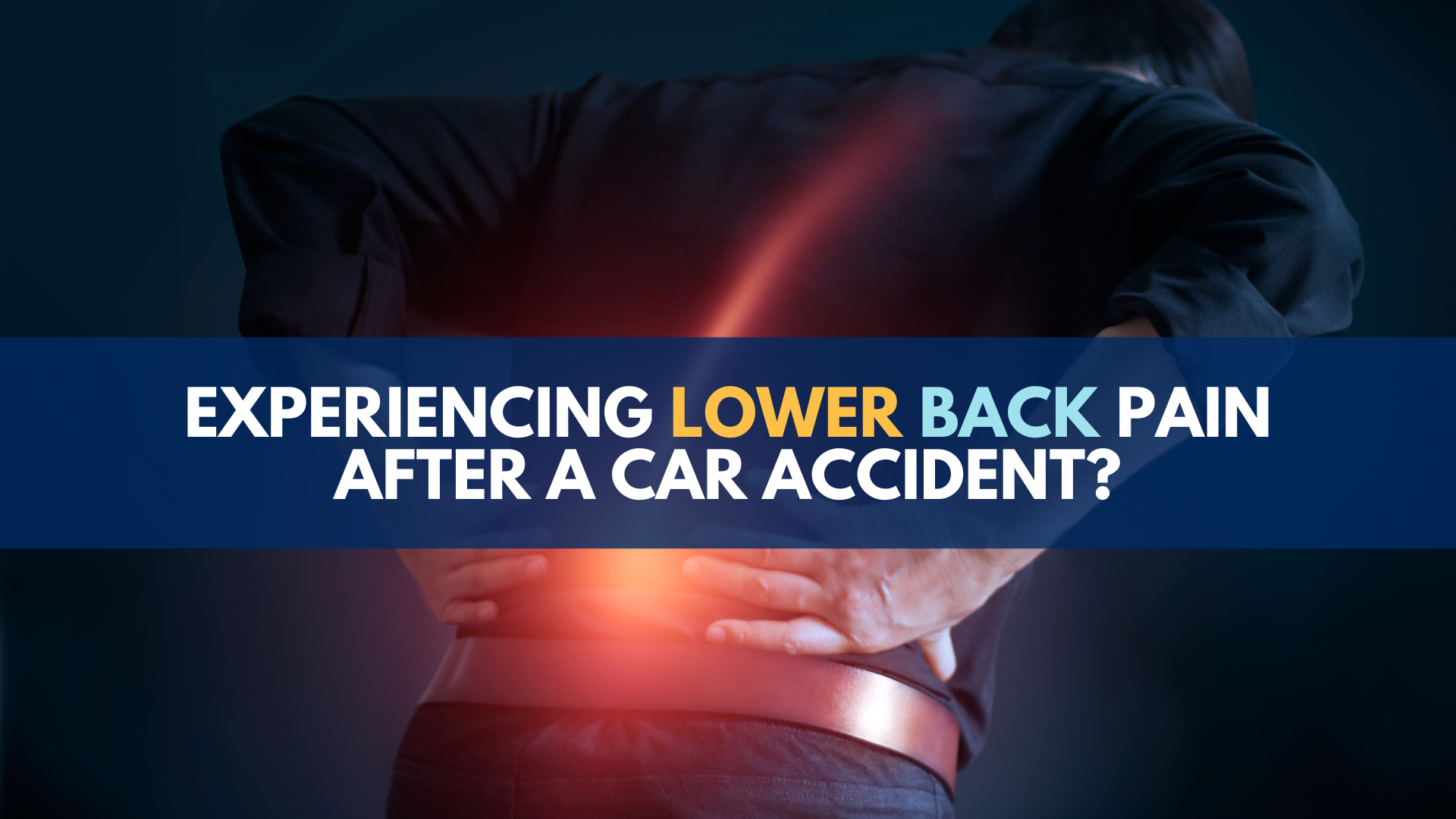
Leg pain after a car accident requires immediate medical attention. It is most often caused by a herniated disc in the lower back that is impinging on a nerve but can also be caused by a broken bone, a torn ACL, a torn meniscus, a soft tissue injury or other injuries caused by trauma to the leg or knee.
Causes of leg pain after a car accident
These are some of the most common injuries that could be causing your leg pain after a car accident:
- A herniated disc in your back.
- Blunt force trauma from your leg striking a hard surface within the passenger compartment.
- You may have ruptured a spinal disc in your lower back, causing nerve root impingement that is causing pain, numbness, or radiation.
- You may have suffered a broken ankle, knee, foot, femur, tibia or fibula.
- You may have torn your “anterior cruciate ligament” or ACL, which is the ligament that stabilizes a person’s knee joint.
- You may have torn your meniscus, which is one of the two pieces of cartilage in a person’s knee which serves as a cushion and stabilizing factor between a person’s thighbone (femur) and shinbone (tibia).
- You may be suffering from knee bursitis, which is inflammation of one bursa or several bursae which are the small fluid-filled, pad-like sacs that reduce friction and cushion pressure points between bones and the tendons and muscles in and around the knee.
- A soft tissue injury.
Common symptoms of leg pain after a car accident
Here are some of the common symptoms that you can have for leg pain after a car accident. If you experience any of the following symptoms, seek immediate medical attention:
- Symptoms of a broken leg: Immediate, throbbing pain; pain that increases with activity and decreases with rest; swelling, bruising, tenderness; deformity; inability to walk or bear weight; cuts; puncture wounds or protrusion of bone fragments
- Symptoms of an ACL injury: A loud “pop” sound; severe pain; knee swelling that worsens for hours after injury occurs; a feeling of instability or “giving way” with weight bearing
- Symptoms of a torn meniscus: A popping sensation; swelling or stiffness; pain, especially when twisting or rotating the knee; difficulty straightening the knee
- Symptoms of knee bursitis: Pain; limited mobility; swelling
- Symptoms of a lower back injury: the human body is more interconnected than we can possibly imagine. Perhaps the most common cause of symptoms of pain, numbness, radiation and tingling is not from an injury to the leg itself, but to the lower back when a disc is herniated or ruptured and the inner disc material is pressing on a nerve root causing symptoms to occur down the affected leg.
Treatment
The treatment for leg pain after a car accident may vary depending on the cause:
- Treatment for a broken leg: A broken leg may require surgery to implant fixation devices, such as wires, plates, nails, rods or screws into the broken bone. This can help maintain proper alignment during healing. However, some breaks can be treated through a process called “reduction,” where a doctor manipulates the broken pieces of bone back into their proper position. In other cases, a break may be immobilized with a cast and brace until the broken bone properly heals.
- Treatment for an ACL injury: With an ACL injury, rehabilitation therapy will be necessary. Whether surgery to reconstruct a torn ACL (replacing the torn ACL with a piece of tendon from another part of the leg) will also be necessary depends on the nature of each, individual victim’s ACL injury and the assessment of the victim’s physician.
- Treatment for a torn meniscus: Physical therapy can help strengthen the muscles around the knee. In some circumstances, a person’s physician may determine that surgery is necessary to repair or trim the torn meniscus.
- Treatment for knee bursitis: Treatment can range from corticosteroid injections to reduce inflammation, to aspiration of excess fluid, to physical therapy, to surgical removal of the inflamed bursae.
What to do for leg pain after a car accident?
If you have suffered leg pain after a car accident, follow these steps:
- Get treatment as soon as possible. When it comes to treating these injuries, the sooner a person begins treatment, the better the chances are that they will make a good recovery. As a personal injury lawyer, I always advise people that the sooner they can get the necessary and appropriate medical care, the sooner they can get back on the road to good health. .
- Get a referral to an orthopedist, orthopedic surgeon, or physiatrist (who specializes in physical medicine and rehabilitation). A doctor can’t help treat your leg pain until he or she knows what is causing your symptoms.
- Early documentation of leg pain after a car accident will make it easier for you to avoid future potential billing problems with your own insurance company or health care provider. Early medical documentation soon after your crash will establish a temporal connection to prove to a health insurance company or a No-Fault insurance company that your motor vehicle crash was the cause of your leg injuries. Documenting your symptoms early on can also help you to avoid many of the problems that arise when an insurance company later might try to deny a causal relationship and refuse to pay for medical treatment. Putting it another way, if there is a large gap of time that passes before your injuries are documented, then it is easier for your insurance company to question whether the motor vehicle crash you were involved in was the cause of your condition. Early treatment helps you get better faster, and early medical documentation creates the clear temporal causal relationship that insurance companies will be looking for when they are being asked to pay for necessary medical care.
- Showing a clear temporal relationship between the motor vehicle crash and documentation of when your injuries were reported, diagnosed and treated also makes it easier for your personal injury lawyer to obtain full and fair legal compensation for your injuries. Most automobile crash injury cases do settle, eventually, but delays in treatment and long gaps in medical documentation will make it harder for your injury lawyer to be able to get a full and fair settlement for you if weeks or months have passed before there is any documentation in the medical records.
- Talk to an experienced personal injury attorney who has helped people with leg pain after a car accident and who knows the medicine and what these cases are worth. A lawyer who focuses on automobile crashes and who has extensive experience litigating motor vehicle crash cases can get you the help you need, including a settlement that reflects the full value for your leg injuries. An attorney can also help you to make sure your bills are getting paid and that your settlement reflects the full measure of the future harms and losses you will face.
- Tell your auto insurance company about your leg pain after a car accident. If you live in Michigan, make sure to include this (and any other injuries you suffered and/or symptoms you are experiencing) in your application for No-Fault benefits, which is also referred to as your “written notice of injury” – which must be given to your No-Fault auto insurance company “within 1 year after the accident.” (MCL 500.3145(1) and (4))
- Do not sign any settlements, releases, or waivers related to your automobile crash: Until you have talked with an experienced attorney who is looking out for your interests, do not sign any settlements, releases, or waivers that are presented to you by your auto insurance company, the at-fault driver’s auto insurer or any other insurance companies or persons.
How to make a legal claim for leg pain after a car accident?
In Michigan, you start your claim for leg pain after a car accident by filing an application for No-Fault benefits with the responsible auto insurance company, according to the No-Fault law’s “priority” rules. The No-Fault insurer will pay for your medical bills and your lost wages if you cannot return to work.
Can I file a lawsuit for leg pain after a car accident?
In Michigan, you can file a lawsuit against the at-fault driver to sue for pain and suffering compensation as a result of your leg pain after a car accident, but you will first have to show that the other driver was at-fault for causing the motor vehicle crash and that your injury constitutes a “serious impairment of body function” under Michigan’s auto law.
Additionally, you may be able to sue the at-fault driver for other economic damages, such as excess and future medical bills and lost wages.
Finally, if your own No-Fault auto insurance company refuses to pay for – or even tries to cut-off – your auto No-Fault insurance benefits related to your medical treatment and care or wage loss for your injury after a crash, then you can also file a lawsuit to sue for unpaid, overdue medical bills, attendant care, medical mileage, replacement services and lost wages because your injury has prevented you from returning to work.
Compensation for leg pain after a car accident
Your compensation for leg pain after a car accident will take several forms. If you have suffered a “serious impairment of body function,” then you can sue the at-fault driver for pain and suffering compensation. Additionally, you may be able to sue for “excess” lost wages and medical bills.
The at-fault driver who caused your leg pain after car accident can be held liable to pay for your lost wages over and above the monthly maximum and/or beyond the three-year limit on No-Fault wage loss benefits. Additionally, the at-fault driver can be sued and forced to pay for your medical bills that exceed and, thus, are not covered by No-Fault PIP medical benefits coverage level in your auto insurance policy.
Injured In A Car Accident? Call Michigan Auto Law
If you have suffered leg pain after a car accident, call now (855) 781-7747 for a free consultation with one of our experienced car accident lawyers. There is no cost or obligation. You can also visit our contact page or use the chat feature on our website.
Michigan Auto Law is Michigan’s largest and most successful law firm that specializes exclusively in helping people who have been injured in auto accidents.
Our secret? Our car accident lawyers deliberately handle fewer cases than other personal injury law firms. This allows us to focus more time and attention on our cases.
Unlike other law firms, our auto accident attorneys are never too busy to promptly return phone calls and answer questions.
We have more than 2,000 5-Star Reviews that reflect this care and attention to detail.
More importantly, this client-focused approach leads to better and faster settlements for our clients. Michigan Auto Law has recovered more million-dollar settlements and trial verdicts for motor vehicle accidents than any other lawyer or law firm in Michigan. We’ve also recovered the highest ever reported truck accident and car accident settlement in the state.
Call now so we can start making a real difference for you.



